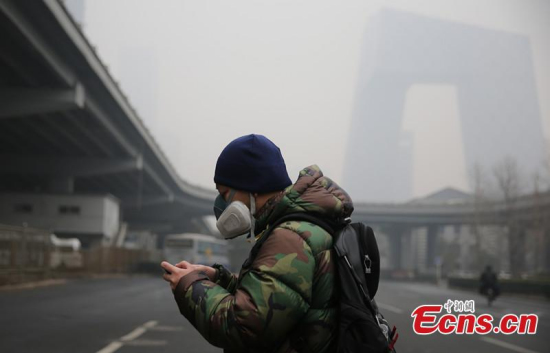
A man wearing a facial mask stands on a street in Beijing, on Dec. 8.(CNS photo/Yang Kejia)
(ECNS) -- Coal-burning has been identified as the largest source of the severe smog affecting northern areas of China, the country's Ministry of Environmental Protection says.
An expert team with members from the Chinese Academy of Sciences and well-known universities has concluded that unfavorable climate conditions (higher humidity and low wind speeds), combined with multiple pollution sources, has accumulated a mass of pollutants in the air.
Scattered burning of raw coal and emissions from small- and mid-sized power plants are the main contributors to the current air pollution, the team found, followed by exhaust fumes, industrial production and dust.
China plans to offer financial incentives to coal-fired power plants that are the least polluting over the next two years, Xinhua reported on Wednesday.
Chai Fahe, deputy head of the China Research Academy of Environmental Sciences, said the amount of nitrates -- a main pollutant from vehicle exhaust -- was halved on Tuesday after the traffic ban.
Cheng Shuiyuan, head of the College of Environmental and Energy Engineering at Beijing University of Technology, said the concentrations of PM2.5 may rise by 10 percent on Tuesday without emergency measures.
Wang Zifa, a researcher at the Institute of Atmospheric Physics at the Chinese Academy of Sciences, suggested authorities carry out emergency measures 24 hours earlier than the occurrence of smog.


















































